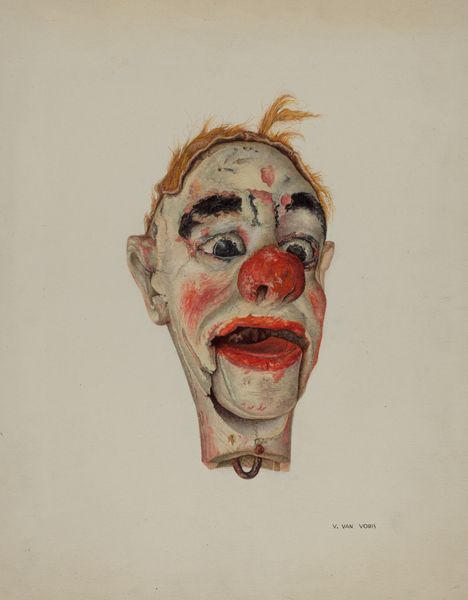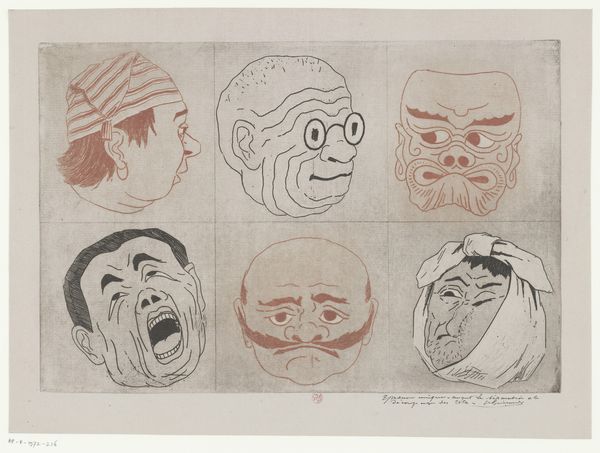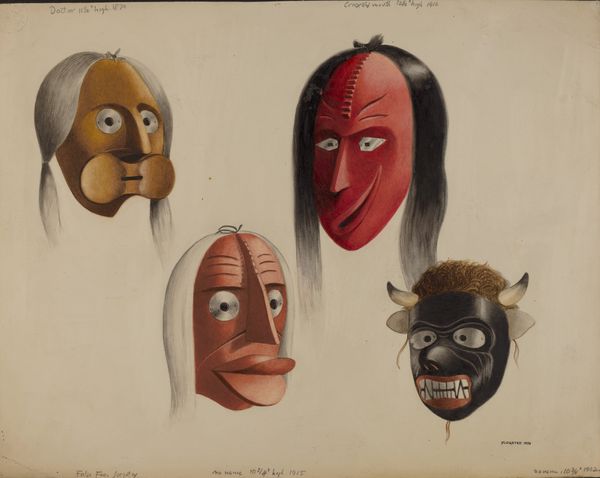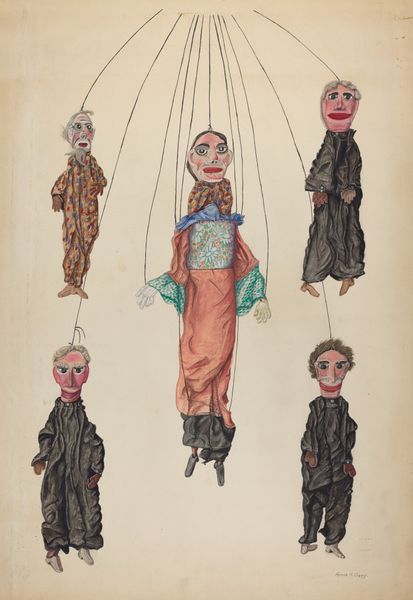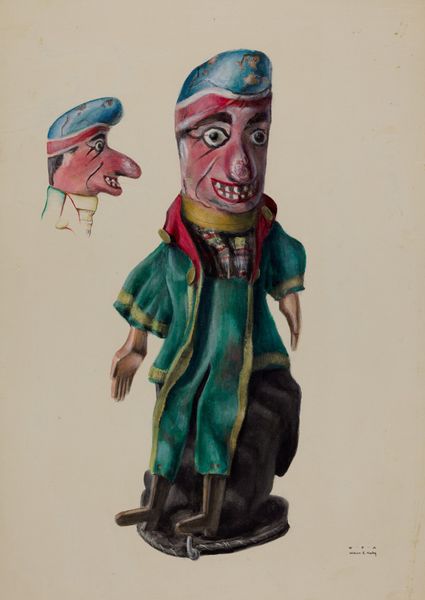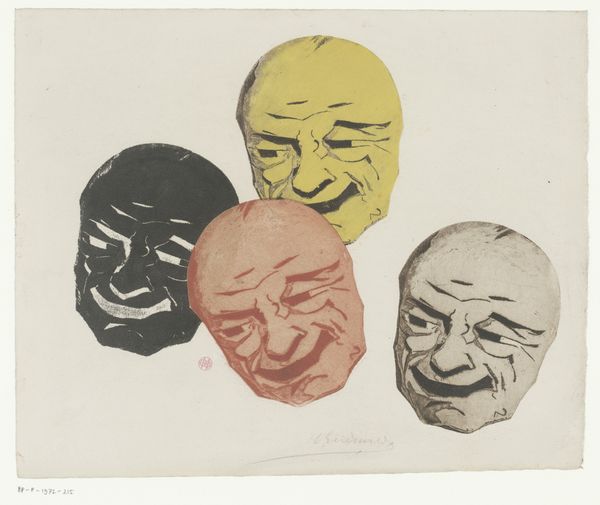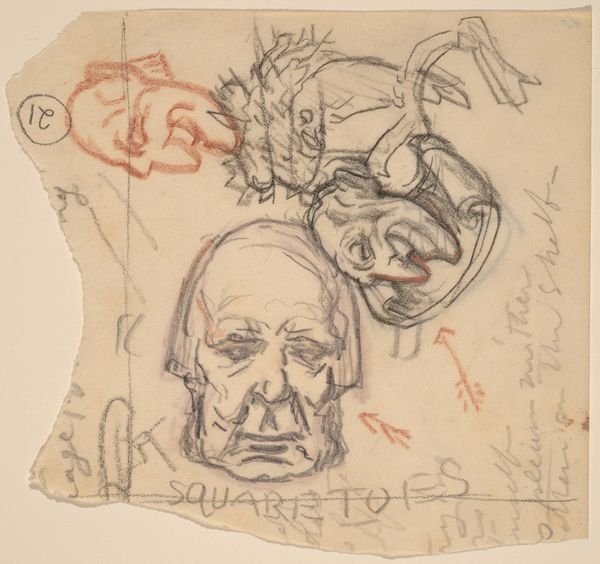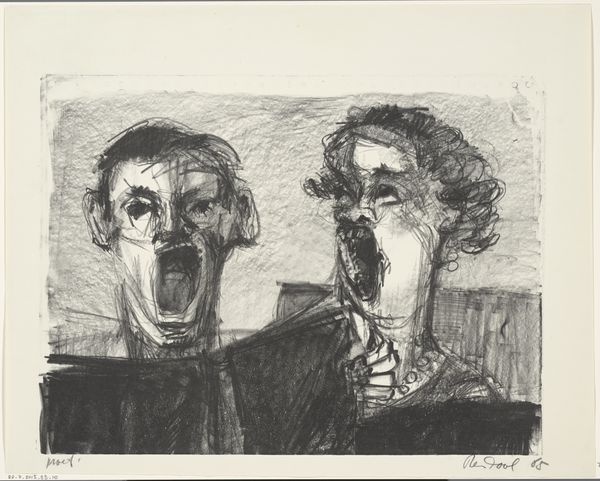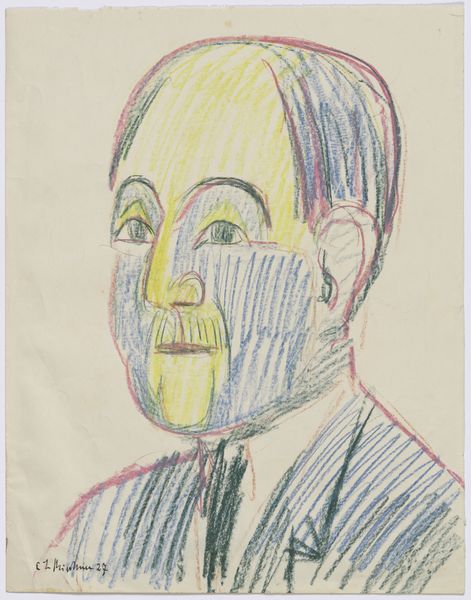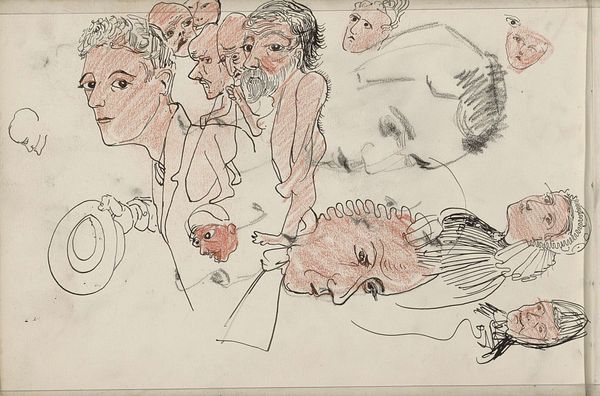
drawing, watercolor
#
portrait
#
drawing
#
caricature
#
caricature
#
watercolor
#
genre-painting
Dimensions: overall: 38.2 x 52 cm (15 1/16 x 20 1/2 in.) Original IAD Object: 4" high
Copyright: National Gallery of Art: CC0 1.0
Editor: We're looking at Frank Gray's "Marionette (Details)" from around 1937, a watercolor and ink drawing depicting five rather unsettling puppet heads. There’s something both comical and slightly disturbing about them. What's your interpretation? Curator: I see a poignant commentary on societal roles and power structures. The puppets, frozen in exaggerated expressions, represent the performative nature of identity. Consider the time period. What historical anxieties surrounding class, race, or gender might Gray be subtly addressing? Who do these caricatures remind you of in the contemporary media landscape? Editor: Well, the exaggerated features are almost grotesque, making me think of political cartoons that aim to dehumanize people. Curator: Precisely! The marionettes become vehicles for exploring how easily individuals can be manipulated, both as performers and as viewers. This brings up questions about complicity: how do we participate in perpetuating harmful stereotypes or narratives through our gaze and consumption of media? Gray presents the idea that those who pull the strings—those in power—create and profit from the caricatures presented here. Does Gray indict specific contemporary cultural figures in this work? Or, alternatively, is Gray himself critiquing society as a whole by displaying the Marionette figures as absurd characters within the context of theatrical art? Editor: So, these aren't just puppets, but mirrors reflecting societal biases? Curator: Exactly! It is the social construction of identity through caricature and performance, where power dynamics and the control exerted over individuals become visible. Editor: It's made me rethink how seemingly innocent entertainment can carry a deeper, perhaps darker, message. Curator: Absolutely, and by examining art like Gray's “Marionette (Details),” we gain insight into the complexities of cultural critique and the insidious nature of power dynamics embedded within representations. It certainly gives new meaning to thinking of a society with puppet masters, doesn’t it?
Comments
No comments
Be the first to comment and join the conversation on the ultimate creative platform.
